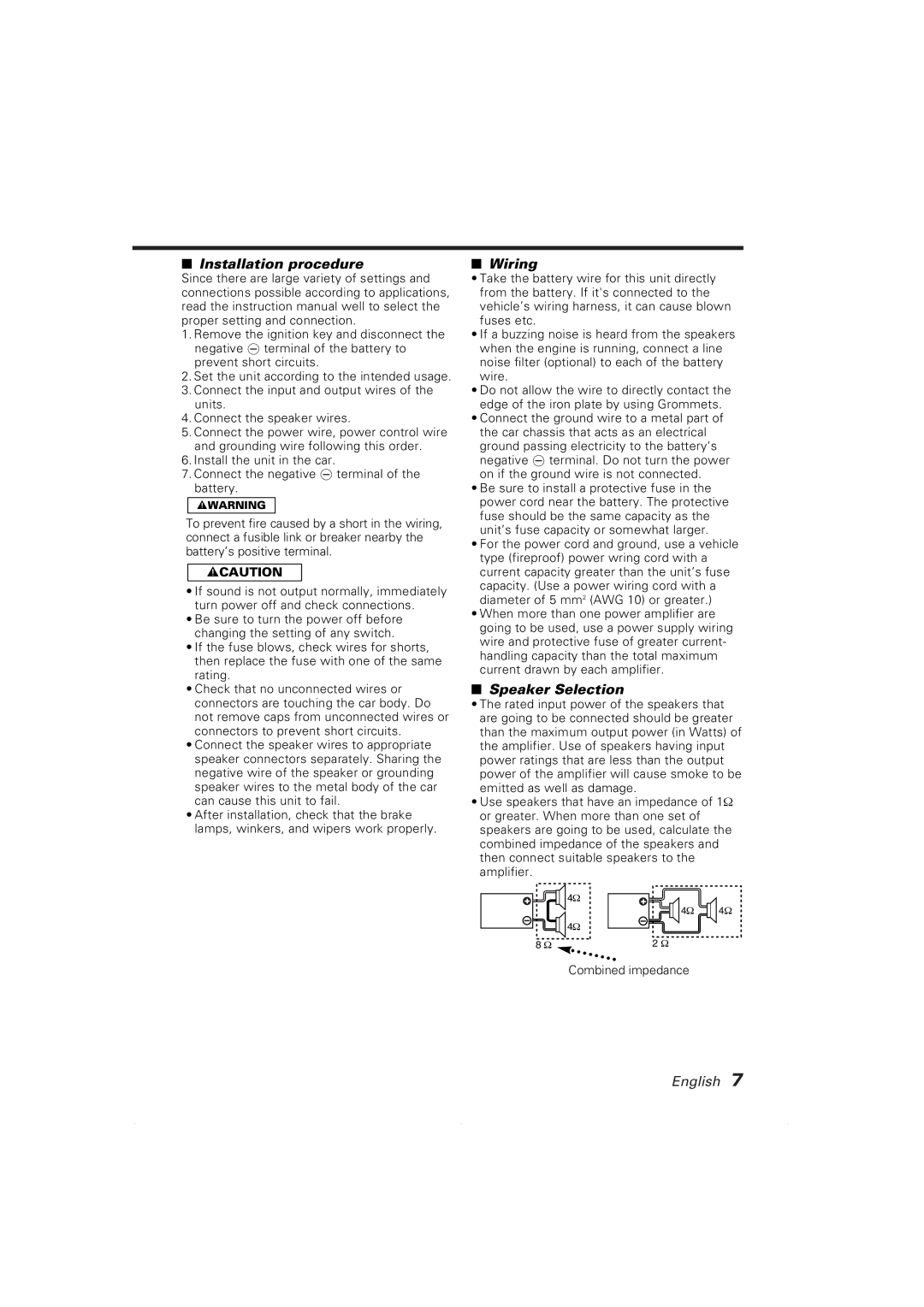KAC-8101D, KAC-8151D specifications
Kenwood has long been a trusted name in the world of audio equipment, and their amplifiers, such as the KAC-8151D and KAC-8101D, exemplify the company's commitment to delivering high-quality sound performance. Both models are designed for car audio enthusiasts who seek to enhance their listening experience with powerful amplification and advanced technology.The Kenwood KAC-8151D is a mono power amplifier that boasts a maximum power output of 1500 watts, making it suitable for driving subwoofers with efficiency and clarity. Its Class D design ensures that the amplifier operates with high efficiency, generating less heat while delivering strong performance. This model is equipped with an adjustable low-pass filter, allowing users to fine-tune the sound to match their subwoofer’s characteristics. The KAC-8151D also features a variable bass boost, providing an extra kick for low frequencies, which is a crucial aspect for delivering an impactful bass experience.
On the other hand, the KAC-8101D is another powerful mono amplifier with a maximum power output of 1000 watts. Similar to its counterpart, it utilizes Class D technology for improved efficiency and thermal management. The KAC-8101D includes a built-in low-pass filter for optimal sound customization, ensuring that users can adjust the frequency response to their specific needs. This model also supports a speaker-level input, making it convenient for installation in vehicles with factory audio systems.
Both amplifiers are designed with durability in mind, featuring robust heat sinks to maintain optimal operating temperatures during intense listening sessions. They come with a remote bass control option, allowing users to adjust the bass level from the front seat, enhancing convenience.
Connectivity is made easy with both models, featuring RCA inputs for easy integration with existing audio systems. The built-in protection circuitry ensures that the amplifiers operate safely by preventing overheating and short circuits.
In summary, the Kenwood KAC-8151D and KAC-8101D are excellent choices for those looking to upgrade their car audio system. With their powerful output, advanced technologies, and user-friendly features, these amplifiers deliver exceptional sound quality and impressive bass response that any audiophile would appreciate. Whether driving subwoofers or enhancing overall sound performance, Kenwood amplifiers remain a top choice for car audio enthusiasts around the globe.

